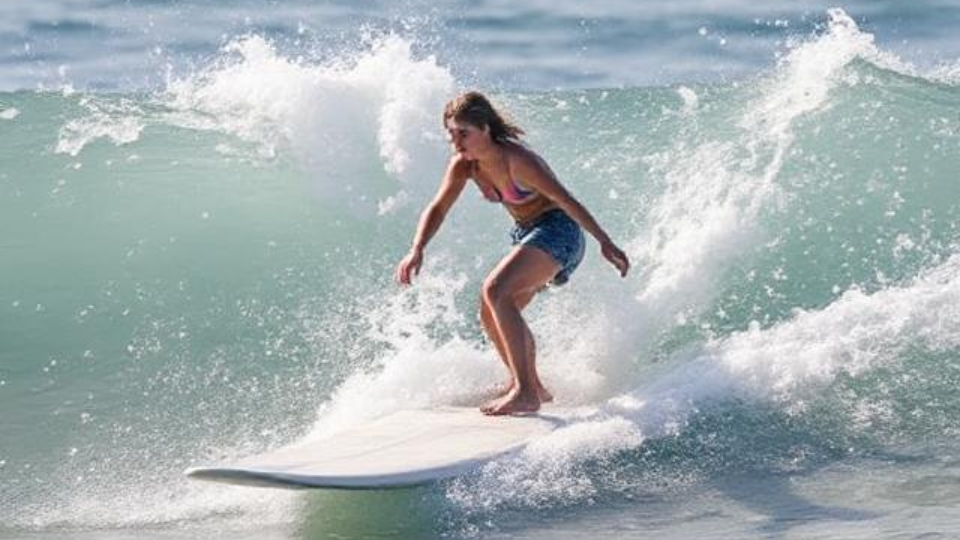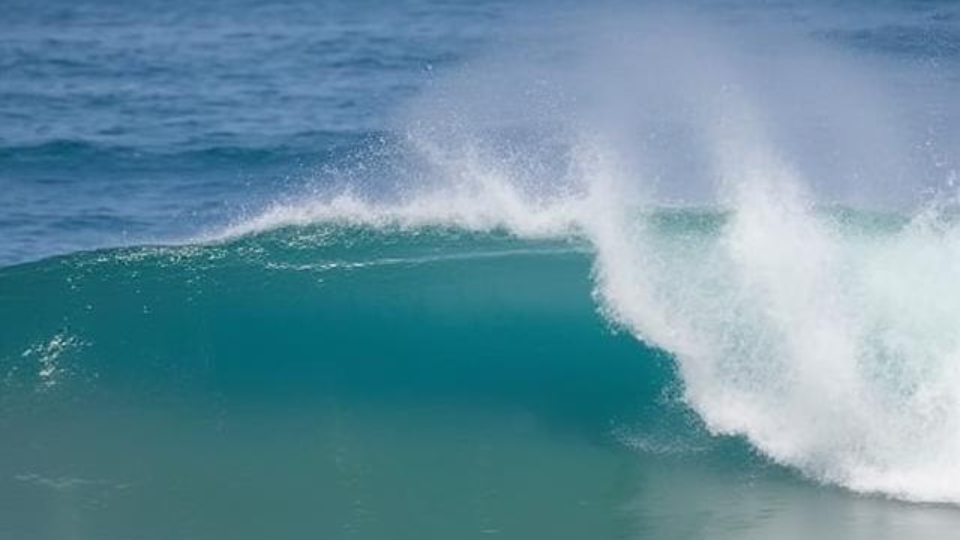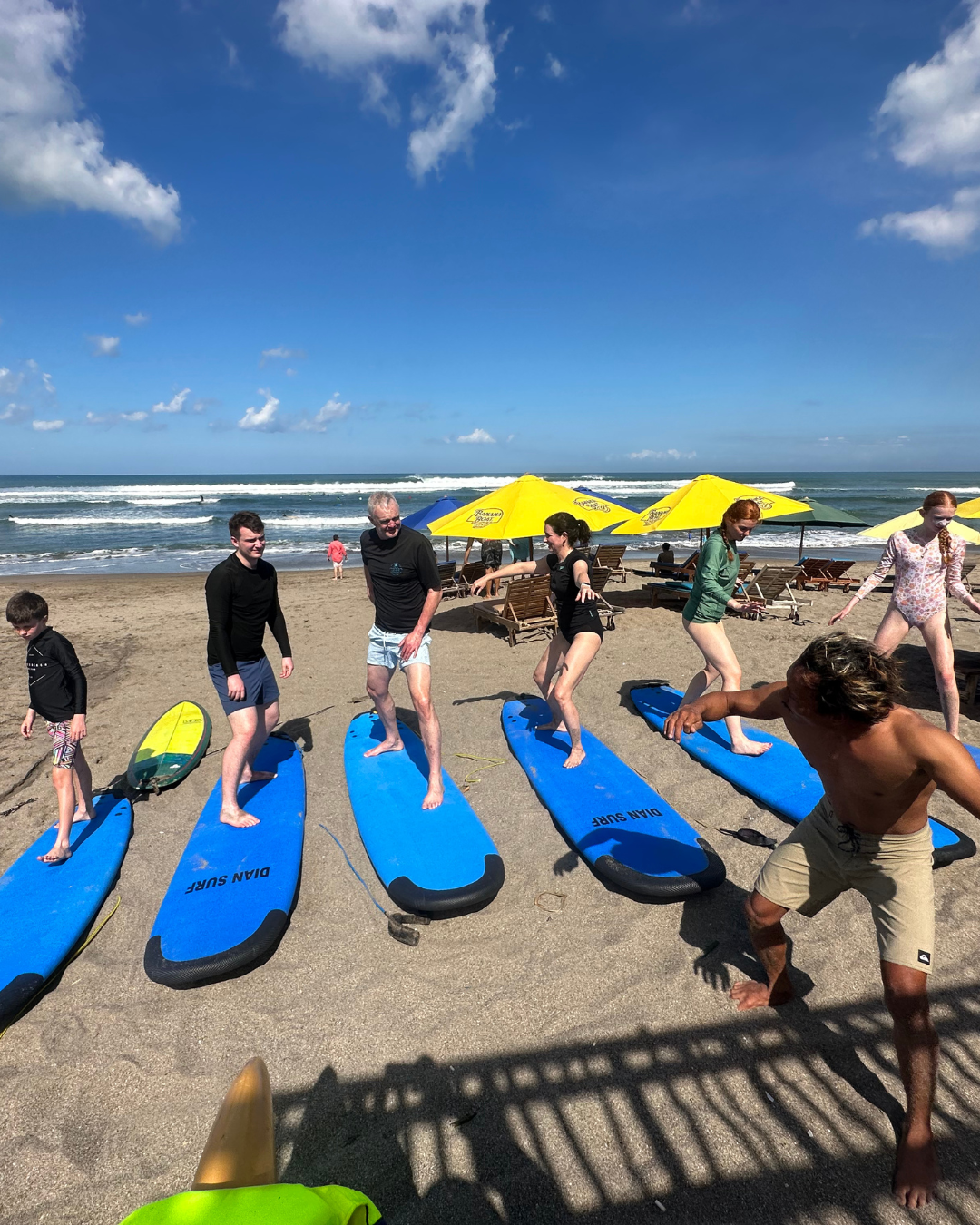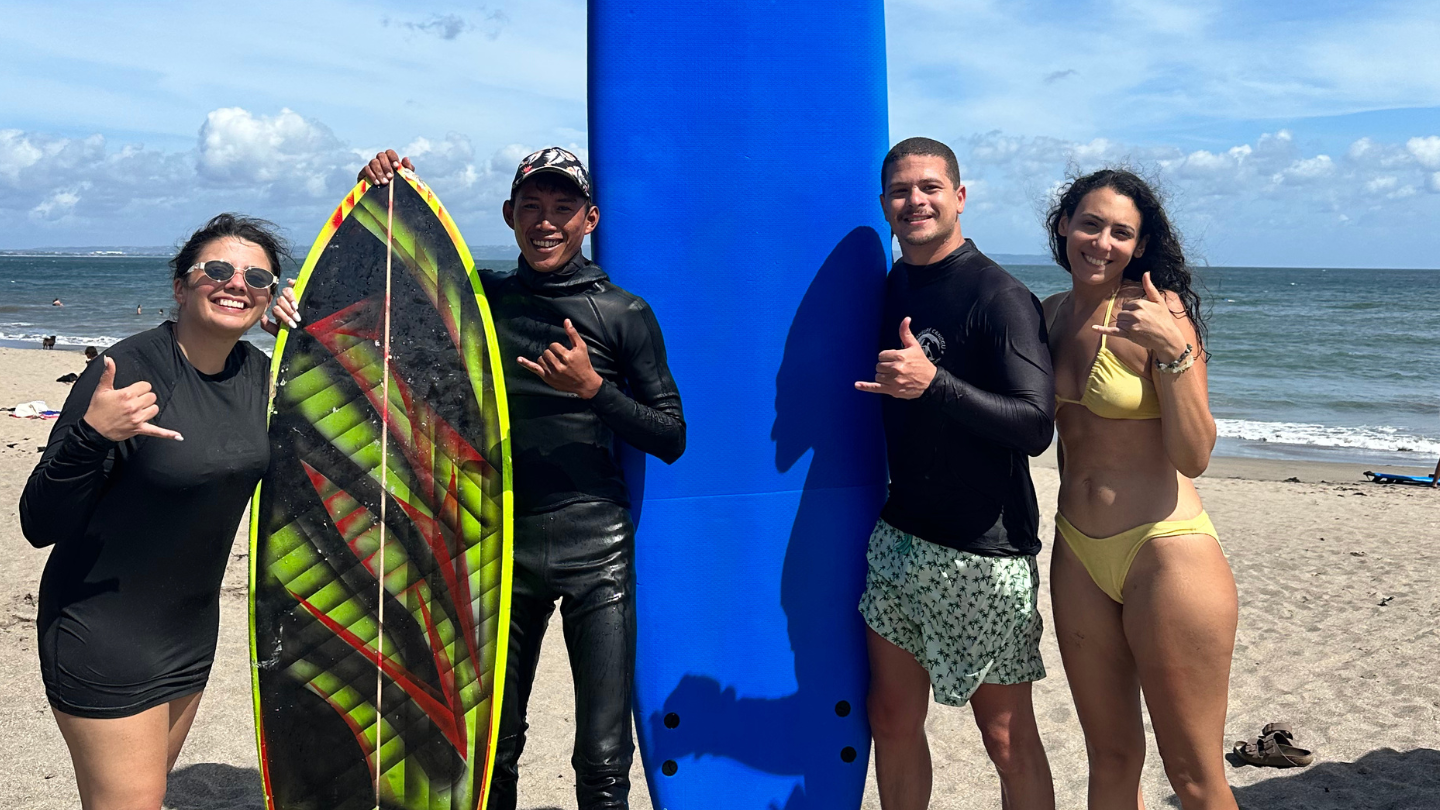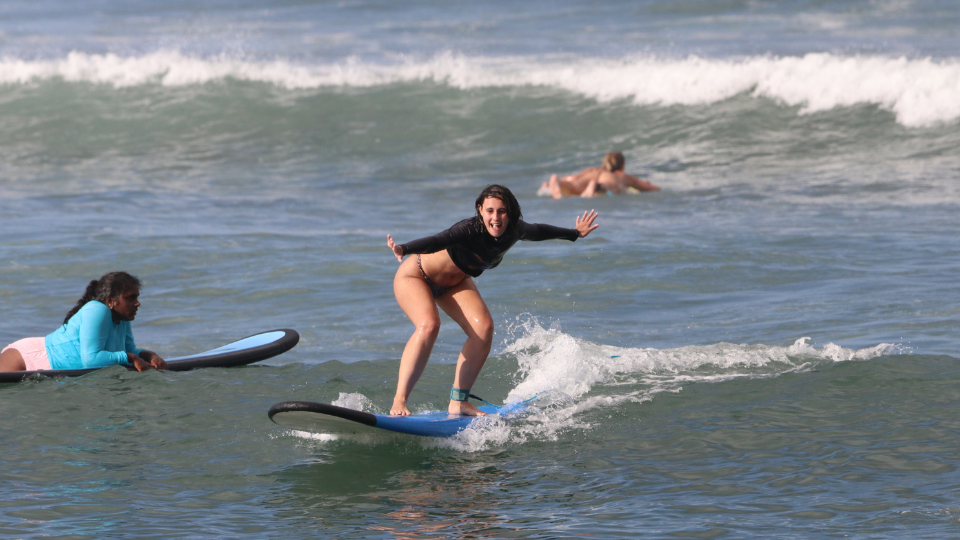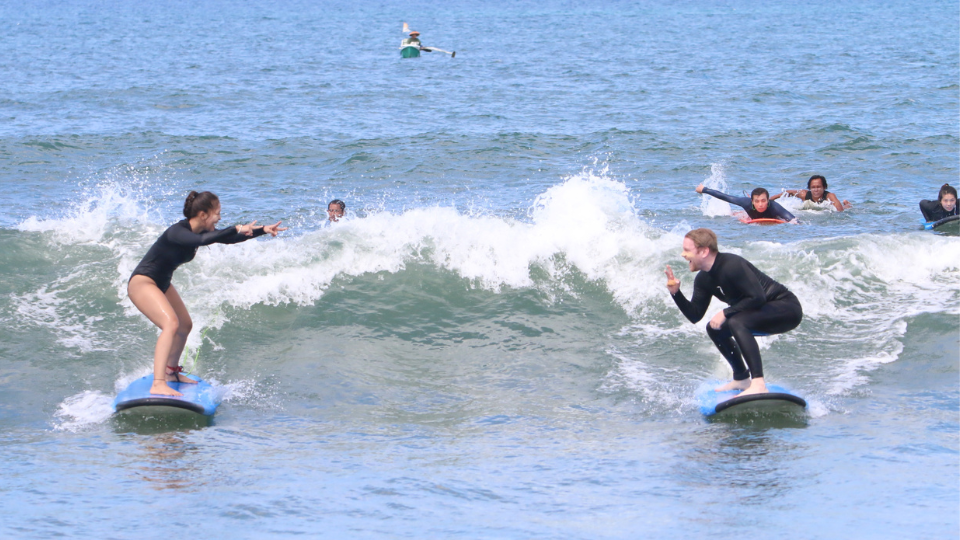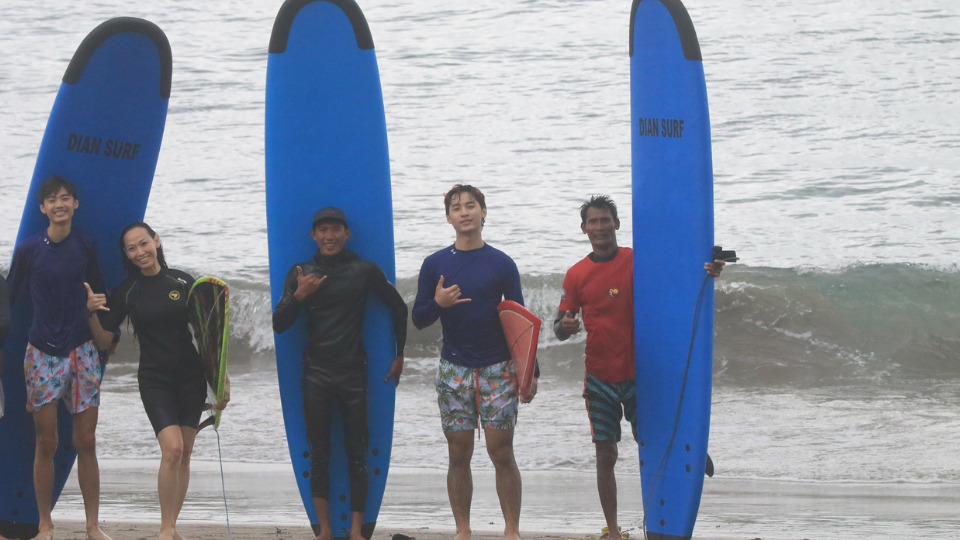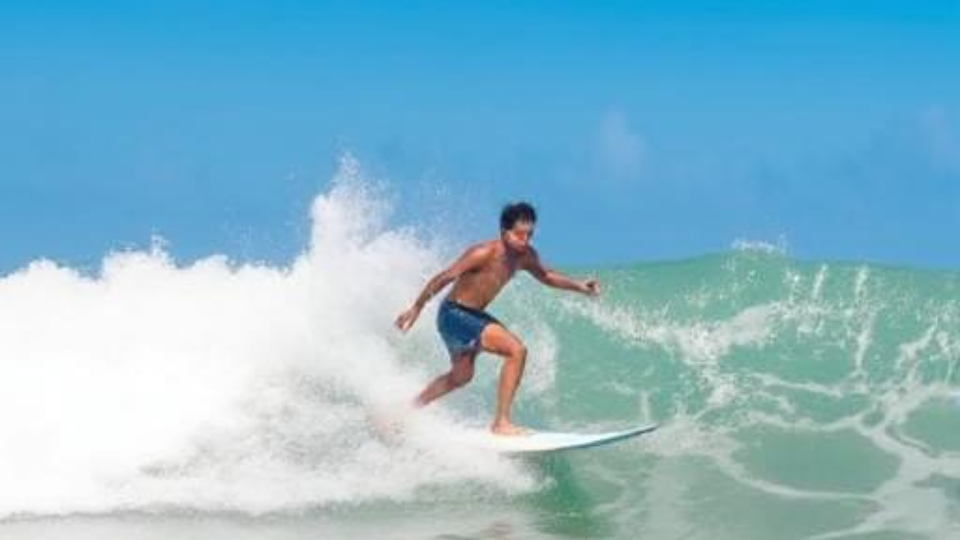
Your Complete Guide to Learning Surfing in 2 Days in Bali
Your Complete Guide to Learning Surfing in 2 Days in Bali, Bali is a surfer’s paradise, with warm waters, beautiful beaches, and waves perfect for beginners. If you’ve ever wanted to surf, you can pick up the basics in just two days. Here’s a simple guide to getting started and catching your first waves.
Day 1: Learning the Basics
Morning: Picking the Right Spot and Gear
Choose a beach with small, gentle waves and a sandy bottom—ideal for beginners. Rent or borrow a soft-top surfboard, as it’s easier to balance on than a hardboard. Don’t forget sunscreen, a rash guard, and plenty of water.
Mid-Morning: First Surf Lesson
A professional instructor can teach you the key skills to get started:
Paddling: Learning how to move efficiently in the water.
Standing Up (Pop-Up): The technique of getting from lying down to standing on the board.
Balancing: Keeping your knees bent and weight centered for stability.
Wave Awareness: Understanding currents, wave timing, and basic surf safety.
Afternoon: Practicing in the Water
Start by riding small waves in the whitewater (where waves have already broken). Focus on getting comfortable with paddling, standing up, and maintaining balance. Don’t rush—take breaks and hydrate.
Day 2: Improving Your Surf Skills
Morning: Paddling Out & Catching Green Waves
Once you’re comfortable in the whitewater, practice paddling out to where waves haven’t broken yet (green waves). Timing is key—start paddling as the wave approaches and try to stand up just as it lifts you.
Mid-Morning: Turning and Controlling the Board
Now that you’re riding waves, it’s time to practice turning by shifting your weight slightly. Try angling your take-offs instead of going straight to shore. This helps you ride along the wave instead of just being pushed forward.
Afternoon: Surfing Independently
By now, you should have enough confidence to paddle for waves on your own. Keep practicing your stance, timing, and control. Even if you wipe out, enjoy the experience—it’s all part of learning.
Helpful Surfing Tips
Relax: Staying loose helps with balance.
Look ahead: Keep your eyes focused forward, not on your feet.
Be patient: Surfing takes time, so enjoy every small improvement.
Respect the ocean: Follow safety rules and be mindful of other surfers.
Final Thoughts
Learning to surf in Bali within two days is totally possible with the right mindset and guidance. Whether you continue surfing or just enjoy the thrill of catching a wave, it’s an experience you’ll never forget. So, grab a board and hit the waves!
Is 26 Too Old to Learn How to Surf?
Is 26 Too Old To Learn How To Surf? For a lot of people, surfing seems like something you have to start as a kid…
Read MoreHow Far is Canggu to Ubud? A Complete Guide to the Journey
How Far Is Canggu To Ubud ? Canggu and Ubud are two of Bali’s most popular destinations, each offering something special. Canggu is all about…
Read MoreIs 50 Too Old to Learn How to Surf?
Is 50 Too Old To Learn How To Surf? For many people, surfing is seen as a young person’s sport, dominated by energetic teenagers and…
Read MoreHow Fit Do You Need to Be to Learn to Surf?
How Fit Do You Need To Be To Learn To Surf? Surfing is an exciting sport that blends balance, endurance, and strength. If you’ve ever…
Read MoreDoes Bali Have Good Surf? A Comprehensive Guide to the Island’s Waves
Does Bali Have Good Surf? Bali, often called the “Island of the Gods,” is a dream destination for surfers worldwide. With its warm waters, reliable…
Read MoreThe Best Time of Year for Surfing in Bali
The best Time Of Year For Surfing In Bali. Bali, Indonesia, is a surfer’s dream. With its warm waters, consistent waves, and breathtaking landscapes, it’s…
Read More

